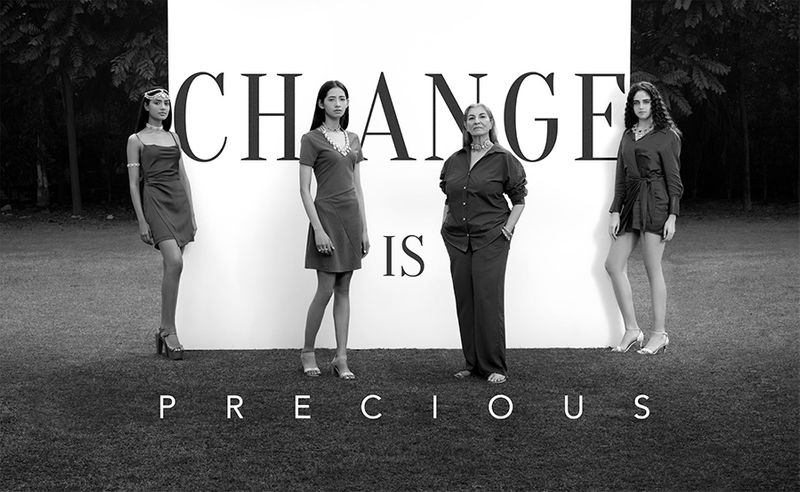“Jewellery and diamonds are forever!” That’s what we’ve been told as far back as we can remember. We all know the role jewellery plays in our lives—how it marks our special milestones, how it carries family legacy across generations, how it serves as a store of value, and, overall, how it elevates a persona. Unfortunately, this is only one part of the picture. A well-kept industry secret lies beneath the value we attach to jewellery. What’s ‘forever’ is the massive environmental destruction, all of which nearly happens in the mining stage. Over the past years, shocking stories of the ugly side of mining from a human rights perspective have emerged.
The larger role played by industry institutions like the Responsible Jewelry Council and supplemented by affirmative action from leading brands has hopefully mitigated those. With increasing pressure from millennials on sustainability, a few leading global brands have also slowly started looking into means to reduce the emission footprint of gold mining. But, given that we are heading into a veritable crisis for the planet in 2030, this is far from enough.

The real cost of buying jewellery
The footprint behind jewellery is massive. The production of a single plain 22-KT gold ring would have typically generated over 20 tonnes of toxic waste, primarily cyanide and mercury generation. That translates to six-billion tonnes in a year! On top of that, mining for gold alone generates over 150 million tonnes of carbon emissions in a year. Furthermore, you also have emissions from mining diamonds and gemstones.
Mind you, this is just the quantifiable part. Beyond emissions, there is large-scale ecological damage, specifically habitat destruction, deforestation, and eutrophication—all of which have far-reaching consequences. This is not going to get solved through piecemeal or marginal measures like soil protection or the use of more electric energy.

Making jewellery more sustainable
The time to act is now–way past, actually. In today’s world, “sustainability” is either a buzzword for literally anything (upcycling, recycling, workers’ rights, de-carbonization, circularity, and more) or is a point we largely wish to remain in denial of or come back with a counter-argument. What we need is a measured approach and understanding. Around 70-80 per cent of environmental problems can be solved only via two levers: usage of less footprint-intensive materials (largely) and extension of product lifecycles.

We need a radical shift in thinking. We have to recognise that we are victims of years of conditioning where we have been made to believe that “preciousness” is a function of materials—a lot of which happen to be destructive to produce, then be it exotic animal skins or mined metals like gold, stones like diamonds, gemstones and more. We need to get to a series of questions:
- How could we create jewellery with zero mining footprint?
- Can we move away from our conditioning of seeing preciousness in the material – gold, diamonds, etc., to celebrating design and craftsmanship?
- How can we produce less while still catering to our demands and sustain the industrial capacity?
Of course, one can argue on the usage of gold as a “store of value” or “an inflation hedge.” However, this argument had validity several years ago, when there were no other real investment avenues. Today, there are a broader set of vehicles for wealth preservation and growth than gold, and even if a portion of one’s portfolio should be in gold—there are smarter ways to do it; in fact, the least effective of all investments is gold jewellery. Recently, I came across a fascinating article wherein a Singapore-based blockchain start-up acquired mining rights for an area with gold deposits in Canada—but instead of extracting it, it plans to sell tokens that represent the asset value underneath. While this is very ambitious and requires a significant leap of faith, it’s a wonderful step that highlights the kind of progressive thinking we desperately need.

Is India ready for this? Early signs look like a ‘yes’! Looking at the bigger picture, we need to be. There’s no better place than India to take the lead—we are the world’s second-largest consumer of gold and diamonds, where gold is so deeply entrenched, culturally and socially, across generations. Is this a moment for us to stand up and create a new norm or benchmark for progressive thinking that the world can take notice of— that will lead the way towards a more sustainable future? Is this a moment where we can make a truly global difference?

Stemming from this context comes Aulerth. More than just jewellery, our drive and aspiration is to leave behind a legacy that will create a new norm for preciousness. That change isn’t easy. It won’t happen overnight. But that’s also why it needs to be done, and it’s so fascinating. Imagine if future generations embrace a concept of luxury that isn’t about excessiveness, isn’t about these rarest materials extracted at whatever cost to the planet, and one that is more thoughtful and caring. That change would indeed be precious.
Vivek Ramabhadran, is the CEO of Aulerth.




